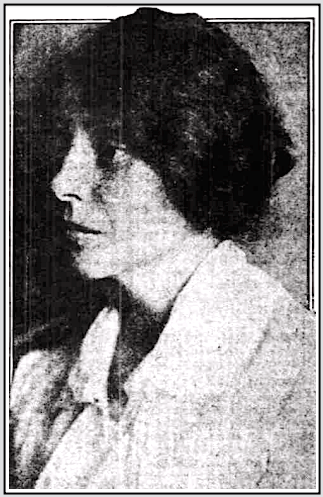 ———-
———-
Hellraisers Journal – Tuesday February 10, 1920
Youngstown, Ohio – Mary Heaton Vorse Observes the Picket Line
From The Fresno Morning Republican of February 8, 1920:
Mary Heaton Vorse can see-and tell what she sees. Her study of a Slovak steel striker is mighty well done, entitled “Behind the Picket Line,” in the Outlook for January 21.
[Emphasis added.]
From The Outlook of January 21, 1920:
BEHIND THE PICKET LINE
THE STORY OF A SLOVAK STEEL STRIKER
-HOW HE LIVES AND THINKSBY MARY HEATON VORSE
[Part I of II.]
[Note: see Introduction by “The Editors” below.]
When I got out of the street car, he detached himself from the darkness and murmured:“Ma’am, I come to meet you.”
It was not yet five, and black as midnight, except as the fiery salvos of the newly started blast-furnace of the Ohio plant shattered the night with glory. No need to ask how he knew me. Women do not usually get off the cars at five in the morning at this point.
On my way to the picket line I had been alone, with the exception of two uneasy-looking scabs. I didn’t look at them. I didn’t like to. The right of the individual workman to work when and how he wished seemed a rather hypocritical theory to me at that moment. It seemed about as tenable as the right of the individual citizen to desert to the enemy in war time.
For weeks I had been immersed in the strike. I had gone merely as an observer, rather skeptically even, and the thundering immensity of the thing had caught me up.
The people—that is to say, the public, those not directly interested—look on strikes as unchancy occurrences, violent manifestations which interfere with the ordered flow of existence. Something that wouldn’t happen at all if it were not for “outside agitators”—that most slippery of all explanations.
What had happened to me was that I had looked at the strike close to, and it had resolved itself into the lives of human beings—thousands of human beings thinking the same thing, thousands of human beings hoping the same thing, thousands and thousands of human beings hoping and willing the same thing, with the terrible patience of the simple. It is a dramatic thing when thousands of men all through the country, men in eight different States, men in fifty different towns and communities, all decide to stay home, all decide to do nothing, because they wish to alter certain conditions.
Men who never saw each other, men who never will see each other, many men who couldn’t understand each other if they were to meet, all doing the same thing, sitting quiet—abstaining violently from action, all bound together by the same thought—the men in all these widely sundered communities thinking together about the same thing. That is one of the things a strike resolves itself into when you look at it close to.

